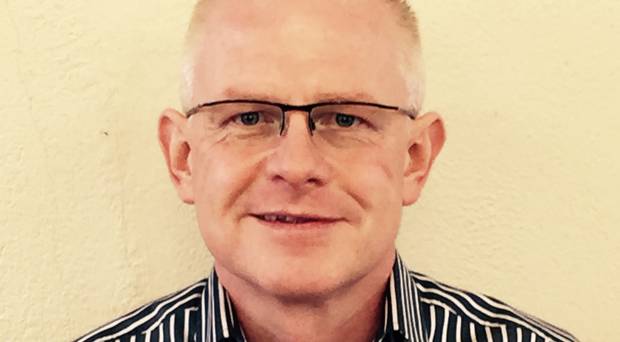Some years ago, a dedicated, active, hardworking, popular priest who ran marathons for the hospice in his spare time, found himself experiencing something he had not anticipated, and did not recognise. He described those days as a time of “crisis in my ministry…my work was consuming me. I was too busy. Self-care and time off were not priorities. It felt like my vocation and belief in God were beginning to erode. It was as if the busyness of ministry had taken me away from my true self, from my core identity, from my reason for being a priest.”
That is a tough admission for any priest, yet I am sure that he is not the only one to experience those devastating feelings. Wisely, he sought a sabbatical. Providentially he went to Worth Abbey. There, Abbot Christopher Jamison diagnosed acedia.
“This ancient temptation offered a descriptive theological reflection of what was happening for me spiritually and professionally as I tried to live with the stresses and changes of contemporary ministry,” wrote Fr Martin McAlinden. “It also offered the possibility of transformation in that writers, ancient and contemporary, have described remedies for acedia.
“It was in these early explorations of acedia that I first realised the potential for using this ancient tradition as a way of understanding the experiences of spiritual malaise among Irish Catholic clergy today and to begin to think also about ways towards transformation. It is this potential of acedia, as both diagnosis and remedy for clergy today.”
Honesty
With great honesty, Fr McAlinden wrote about what had happened, because he wanted to share with his brother priests what he learned at Worth Abbey and in the years which followed, so that others might learn what he had learned, but possibly, less painfully.
He knew that he was not unique in this journey, writing that: “Underneath so much of the unhealthy dynamics in ministry and Church life, such as burnout, cynicism, addiction, loneliness and the formation of models of Church and ministry focused more on management than service, may be lurking the ancient ‘demon’ of acedia. The invidious problem is that most clergy have never heard the word ‘acedia’ and consequently are unaware of its dynamics.”
There was mention of what he described as ‘one of the biggest challenges to ministry and priestly well-being today: feelings of profound loneliness and isolation’”
He wrote: “It was at Worth that I began to find myself again in my relationship with God, began to believe at a deep level that it is in Christ I live and move and have my being (Acts 17:28)…in all of this the presence of God, leading and guiding, always intimately present, seemed so real. I felt cared for by God and experienced a renewed sense of calling to ministry.”
Martin believed that “the word acedia needs to be reclaimed and defined and used to diagnose and describe the spiritual malaise common today in the lives of clergy, and more generally”.
I liked that “more generally”. For acedia is not something unique to priests – every human being of faith may experience it, and it is profoundly important to be able to recognise it for what it is, because it is so destructive, and because when we know what we are doing wrong, we may come to accept things that we were not really taught, such as that while we are called to live like Christ, giving everything, walking the way of the Cross, we cannot do so 24/7 and we have to accept that self-care is not selfishness and that we need to find time to pray no matter how busy we are – something I struggle with.
Laborare est orare, we were taught – to work is to pray. Yet the risk is that we work so much that we do not pray…
Martin asked his fellow priests about their experiences. He identified the challenges they faced including: “Rising workloads as a result of decreasing numbers of priests, a sense of frustration with the institution of the Church and its hierarchies that seemed to not be supporting priests …a sense of feeling uncared for by the institution, that when priests were struggling or unable to cope, nobody seemed to be interested or willing to help.”
And again and again, there was mention of what he described as “one of the biggest challenges to ministry and priestly well-being today: feelings of profound loneliness and isolation”.
***
He explored with those to whom he spoke what had happened to their prayer life since leaving the seminary. Many priests found that the patterns of prayer learned and practiced in seminary were not often useful for ministry afterwards, he wrote. Yet “…many had discovered alternative ways of praying, of being energised, of connecting with God, of being immersed in the love of Christ, but these had been ‘discovered’, not taught, stumbled upon later in life when it seemed as though what had been taught and learned in seminary was not doing what it should. Perhaps one of the challenges for seminary formation for the future would be to find space to explore multiple spiritual practices that involve those traditionally taught like the Office, saying Mass, and so forth, but also introducing seminarians to some of those alternative practices” …so that “when new priests go into parish, they would be aware of a range of different possible ways of living, moving and having their being in Christ that enables them to be resilient in their daily lives”.
He described the many ways priests had found to pray: some found preaching was a way into prayer, some said the daily Office, some talked of learning to see God in nature or in people, others talked about practicing mindfulness, some used pilgrimage as a way into prayer, others reading spiritual texts, and, finally, some found nourishment in the ancient prayers and traditions of Ireland.
When new priests go into parish, they would be aware of a range of different possible ways of living”
And so he set out to identify the characteristics of a “spirituality post-acedia for priests today, or even a spirituality pre-acedia for the priests of the future”.
Fr Martin did not finish his work on acedia, for he died of cancer three years ago this week, but he worked with his fellow priests to identify what could prevent acedia from eroding and destroying the selfless love which lies at the heart of priesthood.
What he had learned is published now in a book: Acedia and Transformation of Spiritual Malaise: Essays in Honour of Martin McAlinden.
Not many of us could have written with such searing honesty of our spiritual struggles. Martin did so because he had found the cause of, and the remedies for, what had happened to him. By continuing to work with his brother priests through what he had found at Worth, he was able to set out a vision for others to ponder and, hopefully, to develop.
He concluded: “May the priests of today, together with the laity and hierarchy of the Catholic Church in Ireland have both the courage and the vision to work towards such possibilities, inspired by Christ who loves each one of us so completely.”


 Nuala O’Loan
Nuala O’Loan Fr Martin McAlinden
Fr Martin McAlinden 